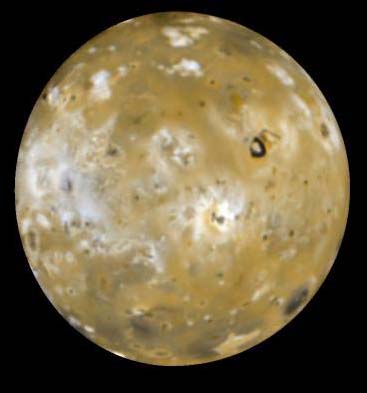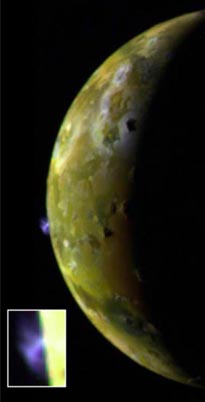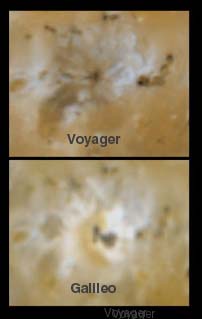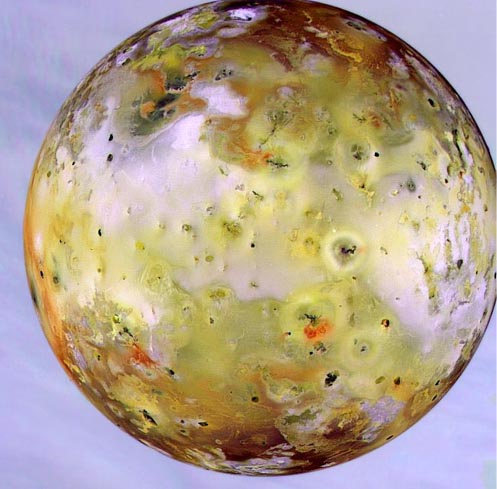Jupiter Moon Io Imaged by Galileo
 |
This image of Jupiter's moon Io was taken by Galileo on June 27, 1996. This is the side which faces Jupiter, and its appearance is very similar to images taken by Voyager I and II during the 1979 flybys. |
 |
 |
The image at left shows a new blue-colored volcanic plume extending about 100 kilometers (about 60 miles) into space from Jupiter's moon Io (see inset at lower left). The blue color of the plume is consistent with the presence of sulfur dioxide gas and "snow" condensing from the gas as the plume expands and cools. Galileo images have also shown that the Ra Patera plume glows in the dark, perhaps due to the fluorescence of sulfur and oxygen ions created by the breaking apart of sulfur dioxide molecules by energetic particles in the Jovian magnetosphere. The images at right show a comparison of changes seen near the volcano Ra Patera since the Voyager spacecraft flybys of 1979
The imaged plume is believed to be a geyser-like eruption driven by sulfur dioxide or sulfur gas erupting and freezing in Io's extremely tenuous atmosphere. Volcanic eruptions on Earth cannot throw materials to such high altitudes. Ra Patera is the site of dramatic surface changes. An area around the volcano of about 40,000 square kilometers, area about the size of New Jersey, has been covered by new volcanic deposits. The image was taken in late June 28, 1996 from a distance of 972,000 kilometers (604,000 miles).

 | This image of Io is part of a series shot by the Galileo spacecraft. The large red ring shows the remarkable area covered by the ejecta from the volcano. |
NASA images from the Galileo spacecraft.
| Discussion of Io |
Jupiter Concepts
Solar System Illustration
Solar System Concepts
References
Chaisson & McMillan,
Ch 11.
| HyperPhysics********** Astrophysics | R Nave |